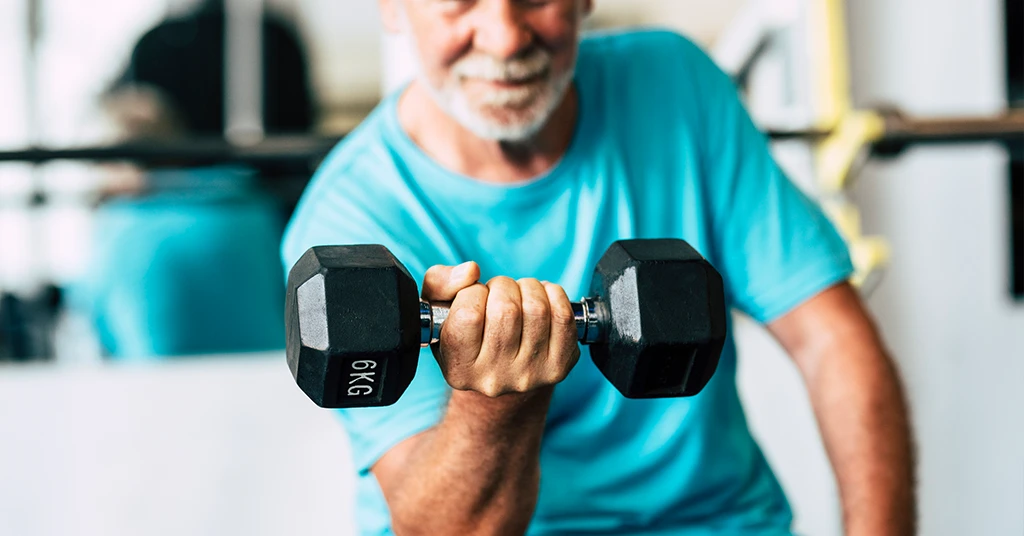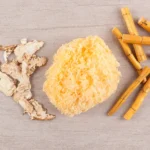1. Introduction – Why Movement Shouldn’t Hurt
Do your knees ache after a walk or your back stiffen after sitting too long?
If so, you’re not alone. Millions of adults experience some level of joint stiffness or bone weakness as they age — and often, it creeps in so gradually that we assume it’s just part of “getting older.”
But here’s the truth: movement should never hurt. With the right combination of lifestyle habits, nutrition, and natural supplements, you can maintain strong bones and flexible joints well into your golden years.
As we age, bone density begins to decline — usually by about 1% per year after 40 — and our joints lose elasticity and lubrication. This leads to stiffness, reduced range of motion, and sometimes pain. The good news is that it’s never too late to take action.
That’s where Health Spark comes in. Their premium formulas — Arthrogenol, Flex 4 Force, and ABG10+ — are designed to support bone and joint health from the inside out, helping you keep moving without pain.
2. Understanding Bone Density and Mobility
Before we talk about solutions, let’s understand what’s really happening inside your body.
Bone density refers to the amount of mineral matter — primarily calcium and phosphorus — in your bones. It’s what makes bones strong, resilient, and capable of bearing weight. When bone density decreases, bones become brittle and more prone to fractures.
Joint mobility, on the other hand, describes how freely and comfortably your joints move. It depends on the health of your cartilage, ligaments, muscles, and the lubricating fluid between bones (synovial fluid).
The two are closely connected: weakened bones can limit your movement, while inactivity accelerates bone loss. It’s a vicious cycle — less movement means weaker bones, and weaker bones make it harder to move.
By actively maintaining both, you can stay strong, stable, and mobile for decades.
3. The Silent Thieves: Causes of Bone and Joint Decline
Bone and joint decline doesn’t happen overnight. It’s often the result of subtle, long-term factors that slowly chip away at your body’s strength and resilience.
1. Aging and Hormonal Changes
After 40, the natural decline in hormones like estrogen and testosterone can weaken bone tissue and reduce the body’s ability to maintain cartilage.
2. Lack of Physical Activity
Your bones respond to stress — in a good way. When you walk, lift, or move, it stimulates bone cells to grow and renew. Without movement, bones start to thin, and muscles lose strength.
3. Poor Nutrition
Calcium, vitamin D, and collagen are essential for bone and joint health. A diet lacking these nutrients leaves your body unable to repair daily wear and tear.
4. Sedentary Lifestyle and Posture Issues
Long hours of sitting can tighten muscles, weaken your core, and misalign your joints. Over time, this leads to chronic stiffness, pain, and even joint degeneration.
The combination of these “silent thieves” can eventually result in osteoporosis, stiffness, or limited mobility — but the good news is, every one of them can be addressed naturally.
4. Keep It Moving: The Role of Exercise
Exercise isn’t just about fitness — it’s one of the best ways to protect your bones and joints.
Weight-bearing and resistance exercises stimulate bone remodeling, which strengthens bone tissue. Meanwhile, movement helps distribute synovial fluid, the natural lubricant that keeps your joints gliding smoothly.
Here are some joint-friendly exercises that can make a world of difference:
-
Walking: A simple, low-impact way to strengthen bones and improve circulation.
-
Yoga: Enhances flexibility, balance, and posture — crucial for preventing falls and injuries.
-
Swimming: Reduces joint pressure while improving muscle tone and endurance.
-
Resistance Training: Builds bone mass and joint stability through controlled stress.
Pro Tip: Start slow and stay consistent. Even 20–30 minutes of daily movement can transform how your body feels and functions.
5. Nutrition for Stronger Bones and Joints
You are what you eat — and your bones and joints are no exception. The right nutrients act as the building blocks for strength, flexibility, and repair.
Essential Nutrients for Bone & Joint Health
-
Calcium & Vitamin D: These two go hand-in-hand. Calcium builds bone structure, while vitamin D helps your body absorb it effectively.
-
Collagen & Hyaluronic Acid: Collagen maintains joint cushioning and elasticity; hyaluronic acid ensures proper lubrication and smooth movement.
-
Magnesium, Zinc & Omega-3s: These nutrients fight inflammation and support the enzymes involved in bone regeneration.
Smart Eating for Strong Bones
-
Eat leafy greens like kale and spinach for calcium.
-
Include salmon, tuna, or eggs for vitamin D.
-
Snack on almonds and walnuts for magnesium and healthy fats.
-
Hydrate often — dehydration stiffens joints and reduces mobility.
Nutrition lays the foundation, but supplements can fill the gaps — especially as our body’s absorption efficiency decreases with age.
6. Natural Supplement Support: The Health Spark Advantage
When diet and exercise alone aren’t enough, supplementation can bridge the gap between what your body needs and what it’s actually getting.
Health Spark offers a trio of powerful, natural supplements designed specifically for bone density and joint mobility support:
1. Arthrogenol – Joint Comfort & Cartilage Support
Formulated to maintain cartilage elasticity and promote comfort in your knees, hips, and shoulders. It helps reduce stiffness and supports smooth joint function, ideal for active adults and seniors alike.
2. Flex 4 Force – Enhanced Flexibility & Mobility
This blend targets inflammation and stiffness, improving flexibility and movement ease. With natural anti-inflammatory compounds, it promotes comfort without harsh chemicals.
3. ABG10+ – Circulation & Nutrient Delivery
A powerful antioxidant formula that improves blood flow and ensures essential nutrients reach your bones and joints. Better circulation means better nourishment — and stronger support from within.
Together, these supplements form a complete joint and bone health system, offering the support your body needs to stay flexible, strong, and pain-free.
All Health Spark products are formulated with clinically researched ingredients and manufactured under strict quality standards, making them safe for daily, long-term use.
7. Lifestyle Habits to Protect Your Bones and Joints
Beyond supplements and diet, small daily habits play a huge role in preserving long-term mobility.
Here’s how you can protect your bones and joints every day:
-
Maintain Good Posture: Keeps the spine aligned and reduces unnecessary stress on joints.
-
Stay Hydrated: Water helps maintain joint lubrication and nutrient flow.
-
Get Enough Sunlight: A few minutes of daily sun exposure boosts vitamin D levels naturally.
-
Avoid Smoking & Limit Alcohol: Both can weaken bone tissue and reduce calcium absorption.
-
Stretch Regularly: Gentle stretching keeps joints flexible and reduces tension buildup.
Remember — consistency matters more than intensity. Even small, steady efforts can create lasting improvements in your mobility and comfort.
8. Conclusion – Keep Moving, Stay Strong
Healthy bones and flexible joints aren’t just about avoiding pain — they’re about maintaining your independence, confidence, and quality of life.
Whether you’re hiking with friends, playing with your grandkids, or simply enjoying a walk at sunset, strong bones and mobile joints make every moment more enjoyable.
By focusing on:
-
Proper nutrition
-
Regular movement
-
Smart supplementation with Health Spark Arthrogenol, Flex 4 Force, and ABG10+,
you can protect your body from the natural wear of aging and continue moving with strength and ease.
Your mobility is your freedom — start protecting it today with movement, mindfulness, and smart supplementation.


